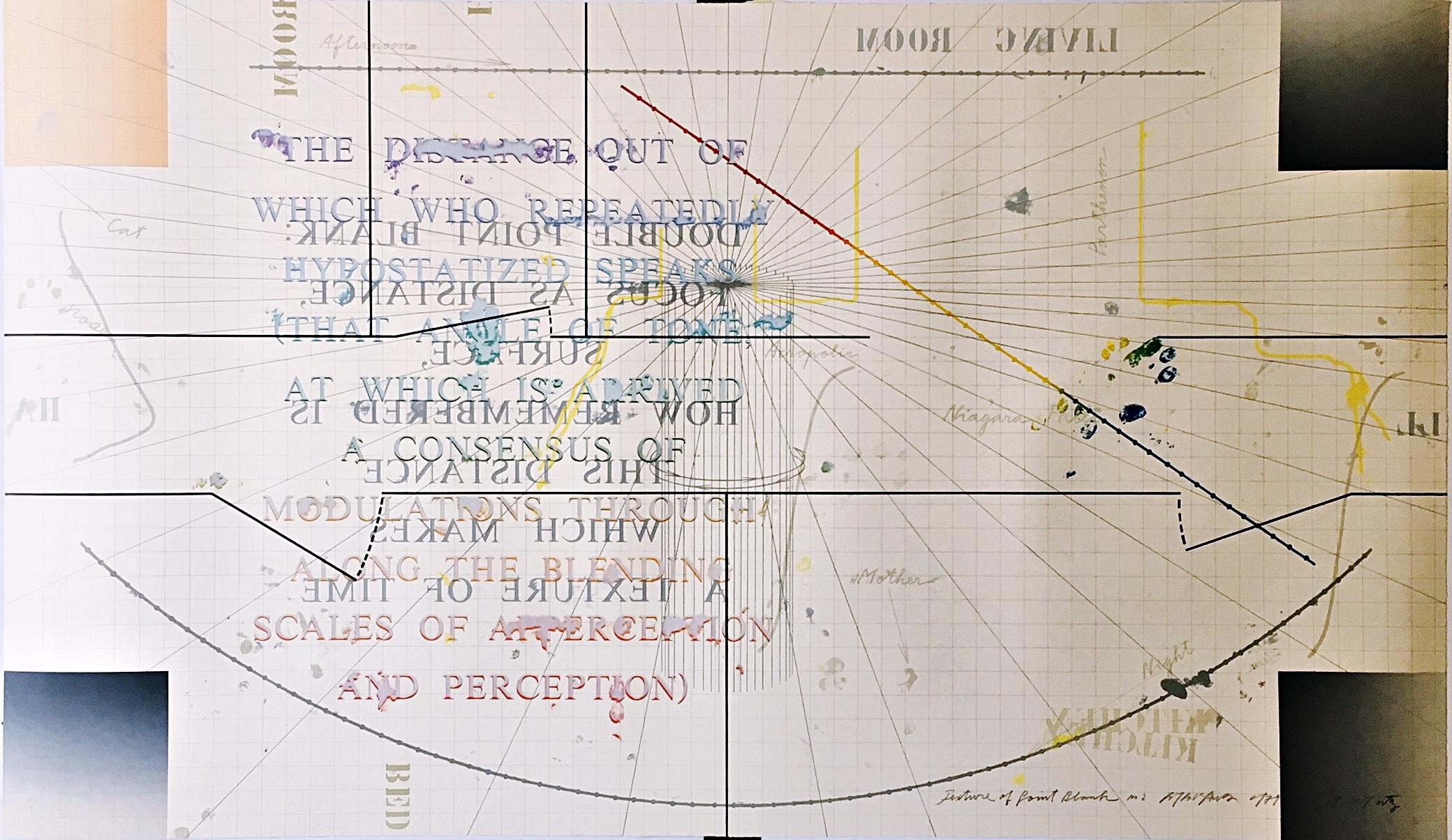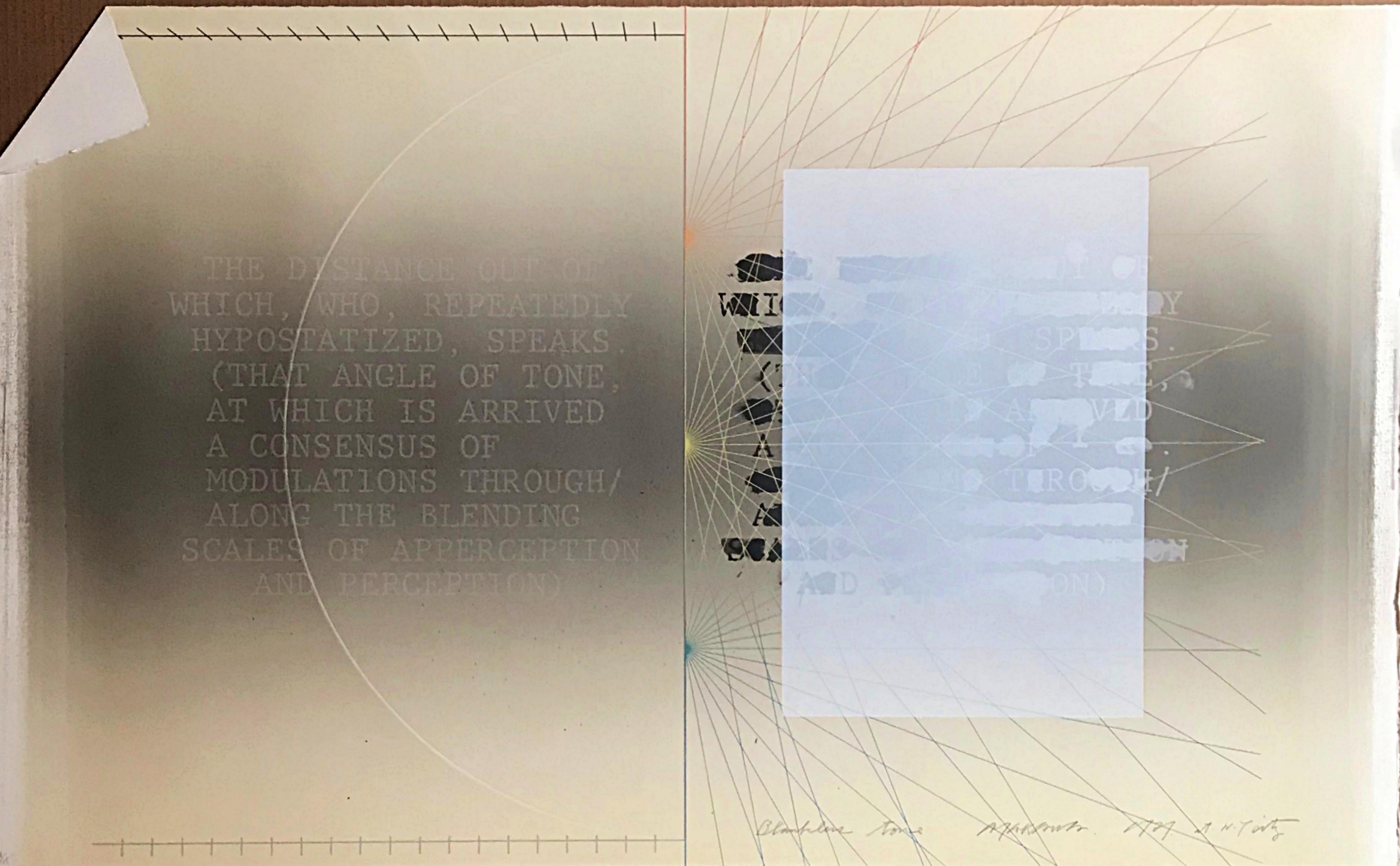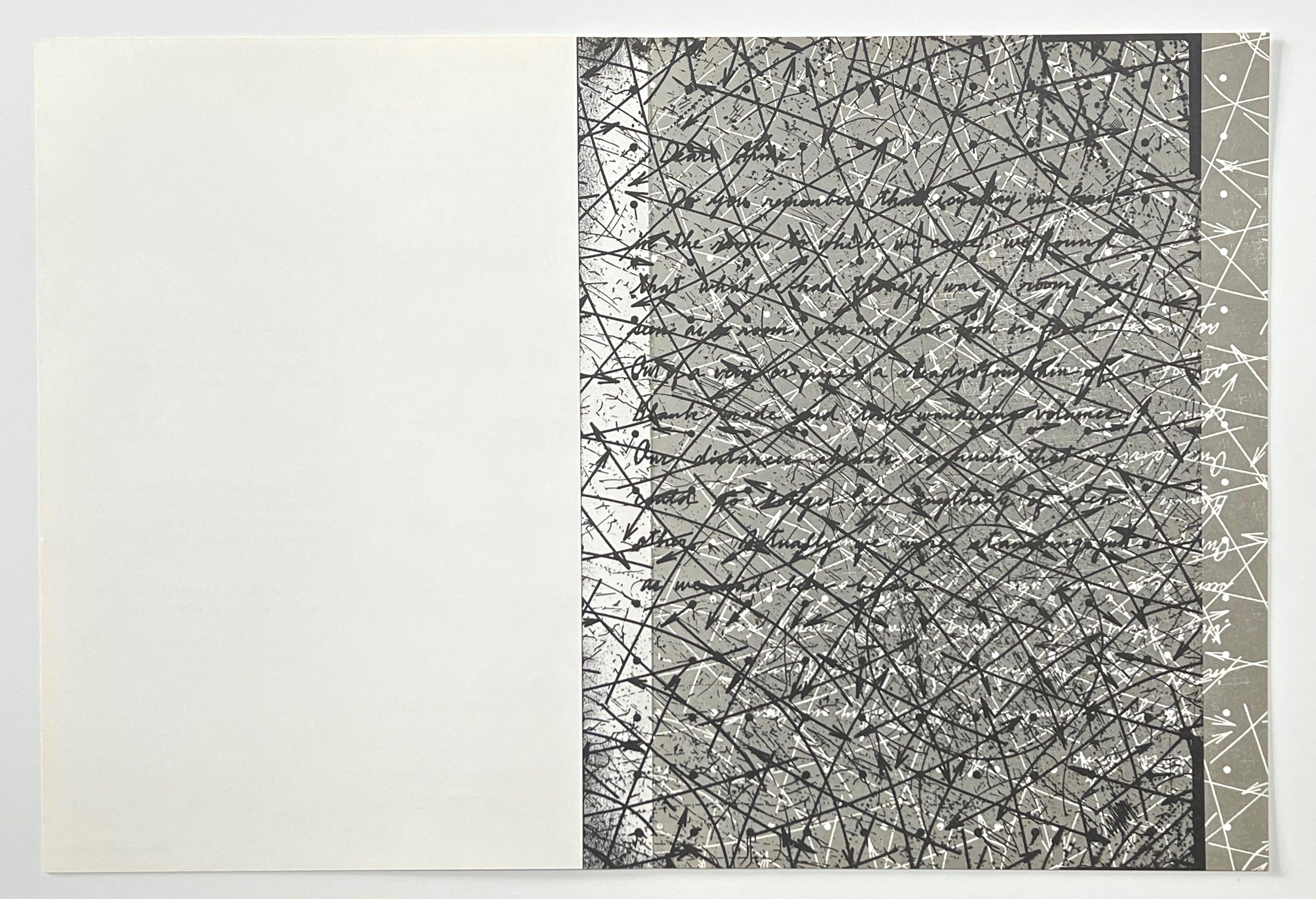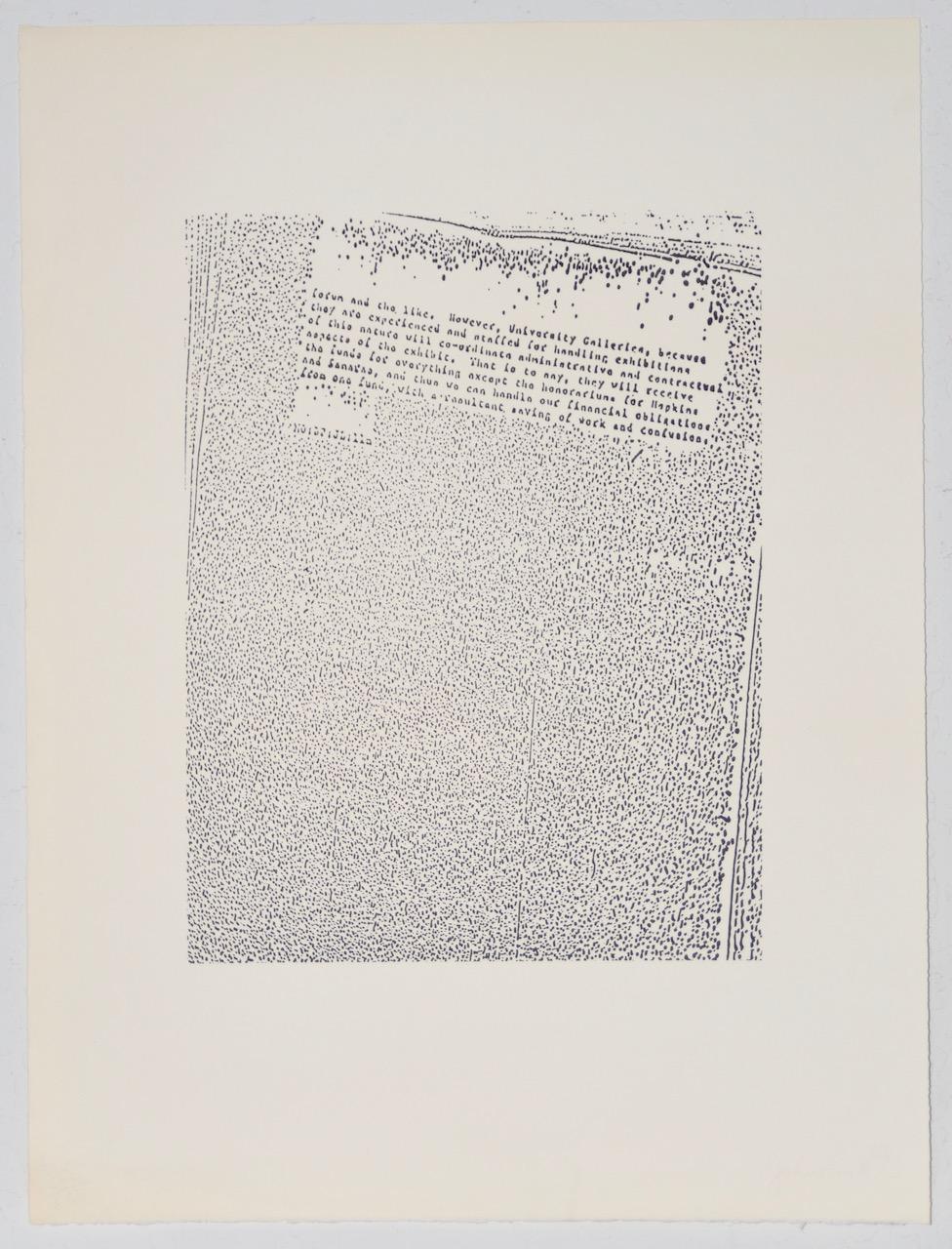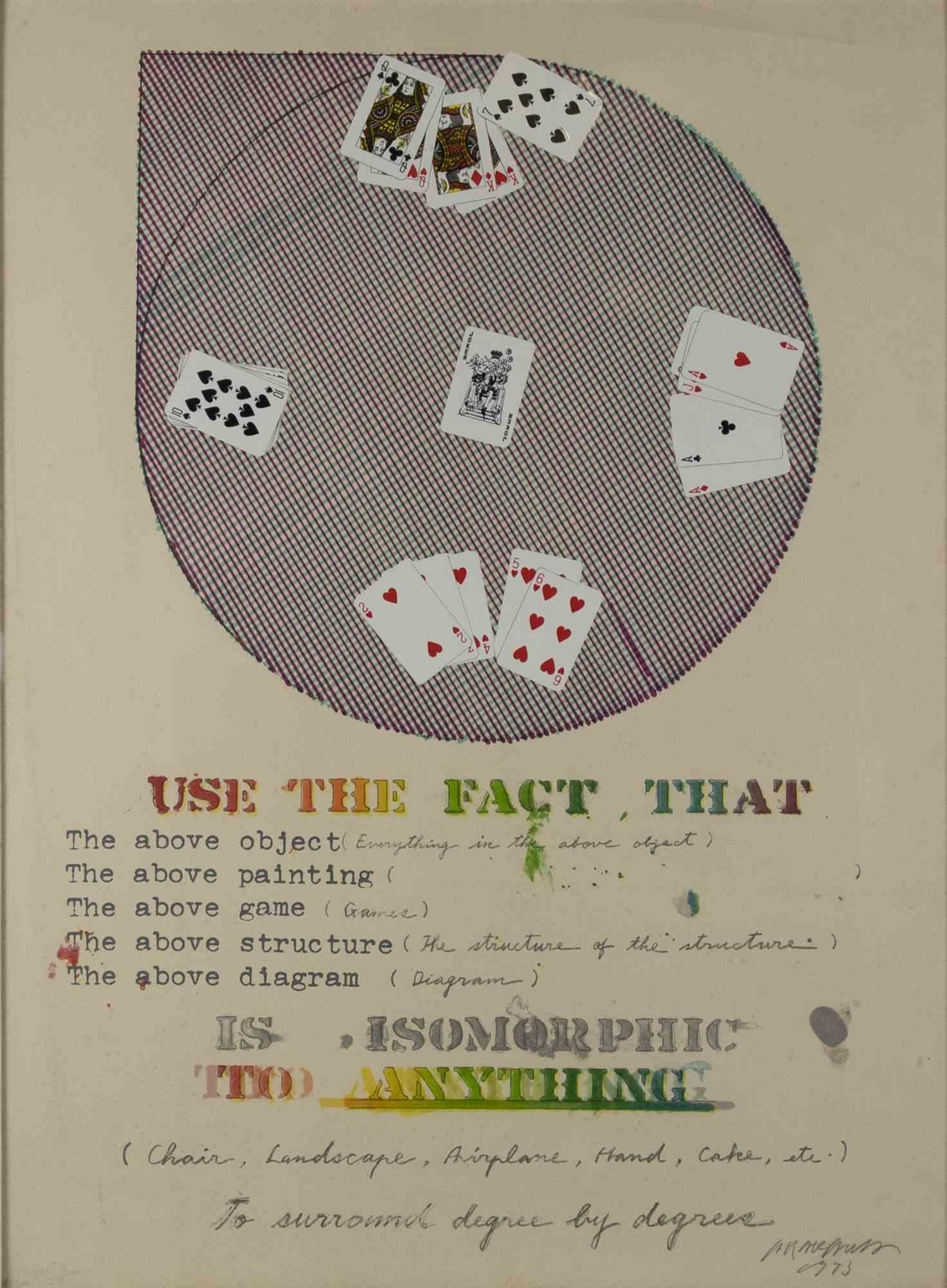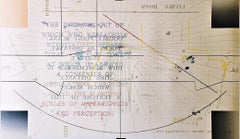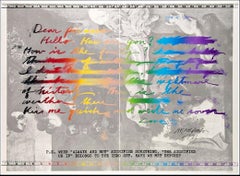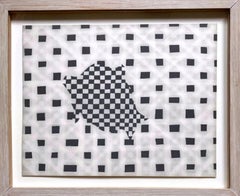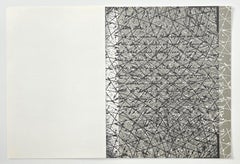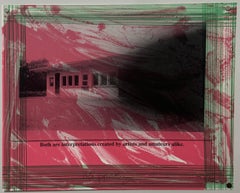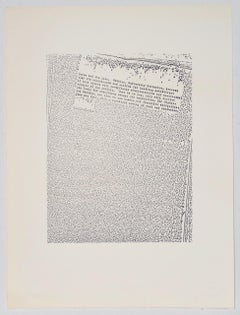Items Similar to Untitled 3 from "No!" Says the Signified" Silkscreen & Lithograph, Signed proof
Want more images or videos?
Request additional images or videos from the seller
1 of 10
Shusaku ArakawaUntitled 3 from "No!" Says the Signified" Silkscreen & Lithograph, Signed proof1973
1973
$6,500
£5,038.76
€5,703.47
CA$9,302.88
A$10,151.52
CHF 5,269.24
MX$121,454.31
NOK 66,883.44
SEK 62,648.86
DKK 42,603.05
About the Item
Shusaku Arakawa
Untitled 3 from "No!" Says the Signified, 1973
Lithograph and Silkscreen on Arches Paper with Deckled Edges
Hand signed and dated on the lower right front
Artist's Proof (unique) aside from the regular edition of 40
22 1/2 × 30 inches
Unframed
This exquisite Arakawa silkscreen and lithograph on Arches paper is a signed and inscribed Artists Proof aside from the regular edition of 40. It features stenciled and handwritten words, erasures and other marks to question the ways we perceive and the ways we make meaning. It was created as part of a six part series Arakawa did titled "NO! SAYS THE SIGNIFIED", published by the GraphicStudio at the University of South Florida, Tampa and printed by Multiples. Inc. This work is part of an important series that was the subject of a major lecture and exhibition at the Portland Art Museum in Maine. It is classic Arakawa - an important example of his way of displacing sometimes cryptic words onto images as a form of artistic philosophy and performance. The work bears both the printer and publisher's blind stamps on the lower left recto (front) and a copyright stamp on the lower right recto (front).
Hand signed, dated and inscribed by the artist.
The text on the print reads as follows:
"The given describes language through training! To what extent? For example, what is the relation of the given to the acquired regarding perception? When in turn languages are used to describe the given or any of its aspects it seems that the mechanism process of meaning occurs. But to what extent? Can consciousness supersede its own mechanism (process) of focusing? If not how much of what seems to occur is nonsense?
Shape is used to plot sense, color to relate to quality of nonsense. A similar pairing can be found in any living room. "
Shusaku Arakawa (荒川 修作 Arakawa Shūsaku, July 6, 1936 – May 18, 2010) who spoke of himself as an “eternal outsider” and “abstractionist of the distant future,” first studied mathematics and medicine at the University of Tokyo, and art at the Musashino Art University. He was a member of Tokyo’s Neo-Dadaism Organizers, a precursor to The Neo-Dada movement. Arakawa’s early works were first displayed in the infamous Yomiuri Independent Exhibition, a watershed event for postwar Japanese avant-garde art. Arakawa arrived in New York in 1961 with fourteen dollars in his pocket and a telephone number for Marcel Duchamp, whom he phoned from the airport and over time formed a close friendship. He started using diagrams within his paintings as philosophical propositions. Jean-Francois Lyotard has said of Arakawa’s work that it “makes us think through the eyes,” and Hans-Georg Gadamer has described it as transforming “the usual constancies of orientation into a strange, enticing game—a game of continually thinking out.” Quoting Paul Celan, Gadamer also wrote of the work: "There are songs to sing beyond the human." Arthur Danto has found Arakawa to be “the most philosophical of contemporary artists." For his part, Arakawa has declared: “Painting is only an exercise, never more than that.” Arakawa and Madeline Gins are co-founders of the Reversible Destiny Foundation, an organization dedicated to the use of architecture to extend the human lifespan. They have co-authored books, including Reversible Destiny, which is the catalogue of their Guggenheim exhibition, Architectural Body (University of Alabama Press, 2002) and Making Dying Illegal (New York: Roof Books, 2006).
- Creator:Shusaku Arakawa (1936 - 2010, Japanese)
- Creation Year:1973
- Dimensions:Height: 22.5 in (57.15 cm)Width: 30 in (76.2 cm)
- Medium:
- Movement & Style:
- Period:
- Condition:
- Gallery Location:New York, NY
- Reference Number:1stDibs: LU1745214963292
About the Seller
5.0
Platinum Seller
Premium sellers with a 4.7+ rating and 24-hour response times
Established in 2007
1stDibs seller since 2022
459 sales on 1stDibs
Typical response time: 2 hours
- ShippingRetrieving quote...Shipping from: New York, NY
- Return Policy
More From This Seller
View AllDouble Point Blank, rare 1970s lithograph, signed/N, renowned conceptual artist
By Shusaku Arakawa
Located in New York, NY
Shusaku Arakawa
Double Point Blank, 1979
Lithograph on paper with deckled edges
Hand signed, numbered 13/45 and titled with publisher's and printer's blind stamp on lower front and p...
Category
1970s Abstract Abstract Prints
Materials
Lithograph
Blankless Tone, lithograph & silkscreen with embossing & folded corner. Signed/N
By Shusaku Arakawa
Located in New York, NY
Shusaku Arakawa
Blankless Tone, 1979
Color lithograph and silkscreen with embossing on Arches paper with deckled edges and folded collage upper left
Hand-signed by artist, Titled "Bl...
Category
1970s Conceptual Abstract Prints
Materials
Lithograph, Screen
Dear Picasso, from Homage to Pablo Picasso portfolio, Silkscreen, Signed/N
By Shusaku Arakawa
Located in New York, NY
Shusaku Arakawa
Dear Picasso, from Homage to Picasso portfolio, 1973 (Hommage a Picasso)
Color Silkscreen on Satin Arches Velincarton
Hand signed and numbered 3/90 in graphite pencil...
Category
1970s Conceptual Abstract Prints
Materials
Screen
$2,800 Sale Price
20% Off
Untitled #2 Color etching, aquatint on Hahnemühle paper Signed/N ex-Deutsch Bank
By Thomas Nozkowski
Located in New York, NY
Thomas Nozkowski
Untitled #2, 2008
Color etching with aquatint on Hahnemühle paper
Signed and numbered 5/35 in graphite on the back. Die cut window flap on the back of the frame reve...
Category
Early 2000s Abstract Expressionist Abstract Prints
Materials
Etching, Aquatint
Rainbow Signed/N 1970s silkscreen & lithograph, pioneering female Fluxus artist
By Mary Bauermeister
Located in New York, NY
Mary Bauermeister
Rainbow, 1973
Lithograph and silkscreen on creamy white paper
Hand signed, dated and numbered 56/250 by the artist on the front
19 x 25.5 inches
Unframed
This work is on the permanent collection of various institutions like: Rice University, Samuel Dorksy Museum of Art, Rutgers Zimmerli Museum and Wheaton College Massachusetts.
While studying the fringe sciences the 1970s, Bauermeister created Rainbow (1973), a lithograph and silkscreen. She uses a creamy white background as the base. Two intersecting diagonal bands of color transcend across the page, and black cursive lettering dances over the surface serving as a mind map of interweaving ideas. Through the central band, Bauermeister shifts through the color spectrum; she begins with red and finishes with violet. Inspired by music, she uses strokes of color that are rhythmically smeared across the lithograph.
The surface lettering, a kind of visual poetry, explores her interest in human emotion and science. The viewer can see Bauermeister’s thoughts as they flow into one another through the use of words such as bliss, love, and healing. Bauermeister also includes a repetition of words such as cancer, sickness, and cure. The word cancer emerges from a cell-like shape. A careful study of the words shows that they may seem dark in nature; however, she juxtaposes these words against the cheerful title and colors. Perhaps the rainbow symbolizes a new hope, an inspiration for an optimistic future.
-Courtesy to the Samuel Dorsky Museum of Art
About Mary Bauermeister:
A multidisciplinary artist known for her intricate and enigmatic assemblages, Mary Bauermeister (1934-2023) continues to defy categorization with layered works in a range of media. A precursory figure of the Fluxus movement—her studio was the meeting point for a number of defining artists of the avant-garde—her work plays an integral role in the discussion of art, both European and American, that emerged from the 1960s. Her reliefs and sculptures, which have incorporated drawing, text, found objects, natural materials and fabric, reference a plethora of concepts: from natural phenomena and astronomy to mathematics and language, as well as her own “spiritual-metaphysical experiences.” Maturing amidst the currents of Minimalism and Pop Art, Bauermeister’s art has resisted labels due to the singular expression of her interests and concerns, among them the simultaneous transience and permanence of the natural world with experimentations in transparency and magnification, multiplication and variation, structure and order, chance and ephemerality, introversion and extroversion. Her three-dimensional receptacles of thoughts, ideas, and notes contain visual, conceptual, and philosophical paradoxes that challenge perceptions and that offer literal and metaphorical windows into which one can glimpse the inner workings of the artist’s mind.
- Courtesy of Michael Rosenfeld...
Category
1970s Abstract Abstract Prints
Materials
Lithograph, Screen, Mixed Media
Untitled, from the Long Point Gallery Portfolio
Located in New York, NY
Judith Rothschild
Untitled, from the Long Point Gallery Portfolio, 1988
Woodcut on paper
Hand signed, numbered 22/30 and dated on lower fr...
Category
1980s Abstract Abstract Prints
Materials
Pencil, Woodcut
You May Also Like
original lithograph
By Shusaku Arakawa
Located in Henderson, NV
Medium: original lithograph. Printed in 1982 for the art revue Derriere le Miroir (issue number 250), and published in Paris by Maeght. Image size: 15 x 12 1/4 inches (380 x 310 mm)....
Category
1980s Prints and Multiples
Materials
Lithograph
Conceptual Artist Allen Ruppersberg Hand Printed Lithograph Prints & Photographs
By Allen Ruppersberg
Located in Surfside, FL
Allen Ruppersberg (American, 1944-)
Lithograph, Mixed media
From the Top Ten Historical Similarities (and Differences) Between Prints and Photographs.
This sale is of one print not t...
Category
2010s Conceptual Abstract Photography
Materials
Mixed Media, Lithograph
John Link (American, b.1942) "Untitled" Limited Edition Lithograph c.1973
By John Link
Located in San Francisco, CA
John Link (American, b.1942) "Untitled" Limited Edition Lithograph c.1973
Rare mid 20th century lithograph by noted American artist John Link.
The lithograph shows an area of illegible text surrounded by a block of black dots.
Art dimensions 16" x 20". The hand made paper measures 24" x 32".
Pencil signed and numbered by the artist. Number 32 out of 60.
Very good condition. Comes unframed.
John Link studied at the University of Oklahoma. Exhibitions include: Joslyn Biennale; Oklahoma Art...
Category
Mid-20th Century Abstract Expressionist Abstract Prints
Materials
Lithograph
USE THE FACT THAT - Lithograph by Shusaku Arakawa - 1973
By Shusaku Arakawa
Located in Roma, IT
USE THE FACT THAT is an original contemporary artwork by Shusaku Arakawa in 1973.
Mixed colored lithograph.
Hand signed and dated on the lower right margin. Numbered on the lower l...
Category
1970s Contemporary Figurative Prints
Materials
Lithograph
Project - Lithograph by Lia Rondelli - 1982
By Lia Rondelli
Located in Roma, IT
Hand signed and dated.
Edition of 99 prints.
Good conditions.
Category
1980s Contemporary Abstract Prints
Materials
Lithograph
Untitled - Frost, Conceptual Lithograph by Alan Sonfist
By Alan Sonfist
Located in Long Island City, NY
Alan Sonfist, American (1946 - ) - Untitled - Frost, Medium: Lithograph, Size: 24 x 35 in. (60.96 x 88.9 cm)
Category
1980s Conceptual Abstract Prints
Materials
Lithograph
More Ways To Browse
Arthur Danto
Joan Miro Revolutions Sceniques Du Xxe Siecle I
Jorg Schmeisser
Josef Albers Yellow
Kandinsky And Etching
Kaws Snoopy
Krakow Vintage Poster
Lennart Nystrom
Lichtenstein Silkscreen
Luciano Castelli
Milan Lukac
Motherwell Africa Suite
Mourlot Corbusier
Pablo Eduardo
Pepe Tanzi
Peter Max Signed Flowers
Philip Guston Prints
Picasso Affiches
